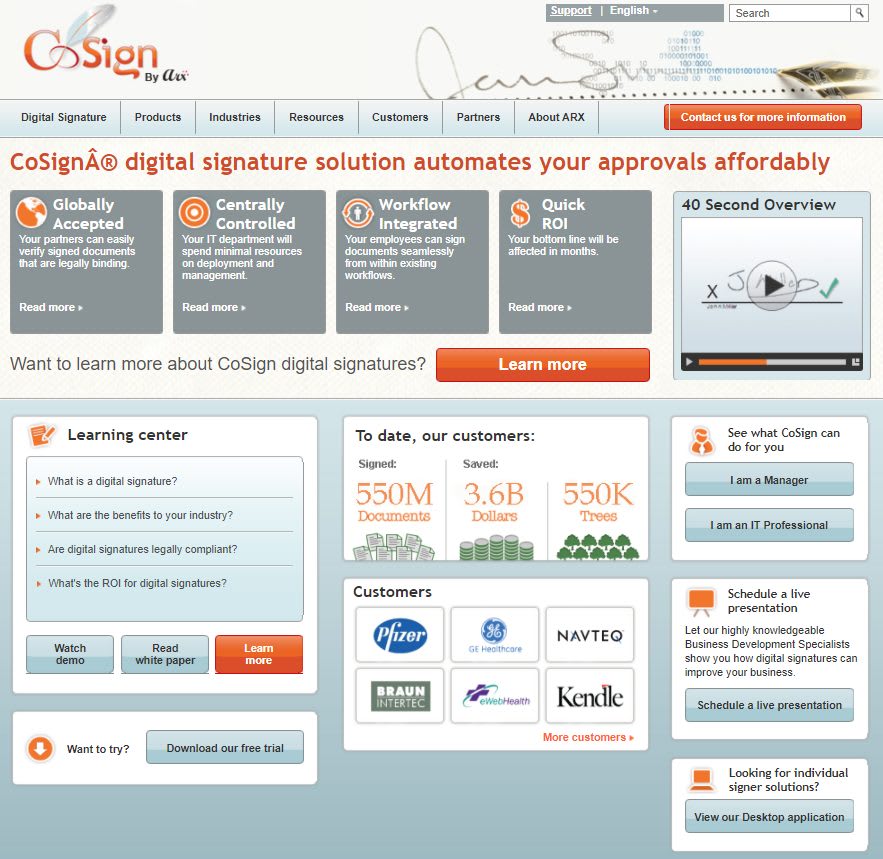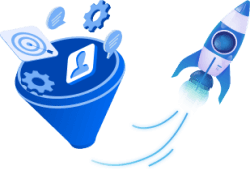Grow your Shopify app in 2025 – Part 1: Marketing & Traffic Acquisition

There is a general belief that optimizing a funnel is a thing for b2c startups only. But the truth is that fleshing out your funnel is as crucial to b2b startup success as it is for b2c. ARX (Algorithmic Research Ltd) is a great example.
ARX had an unusual journey. It was founded in 1987 by students of cryptography pioneer Adi Shamir, the “S” in the RSA algorithm. Ten years later, the company was acquired by Cylink for nearly $100M. The acquisition failed. In 2001, Cylink’s management was about to write it off.
To save the company, ARX’s management, headed by Gadi Aharoni, bought it back for a symbolic amount - and a mountain of debt. ARX’s team worked hard. They took no pay for a while. Two years later, the company paid off most of its debt and stood on its feet again.
By this time, the markets for the company’s products were shrinking. New technologies were replacing old ones. It was time to develop a new product. Digital signatures were chosen. CoSign was created.
I joined as Head of Marketing in 2009, four years after CoSign was launched. At the time, CoSign was one of the pioneers in the developing digital signature space. It was an enterprise digital signature solution that allowed for signature-based digital workflows to remain paperless, compliant, and secure.
CoSign sales were around $150K/month. There were 70 CoSign customers, paying an average of $25K each. The company’s website had 15K visitors a month - not bad for a developing space with limited online searches. It managed to capture 1% of them- mostly through the contact form. These 150 leads fed 4 sales managers and a VP.
Our niche-based go-to-market strategy was greatly inspired by Geoffrey Moore’s Crossing the Chasm and the follow up Inside the Tornado. The books provide a market penetration framework for innovative b2b startups.
The main idea is to target one niche at a time - a niche with a critical common use case that is underserved. To win the niche, startups need to concentrate their resources on it and provide a full solution for the use case. Once you conquer the first niche, the beachhead, you expand to adjacent or similar niches.
For CoSign, this niche was clinical trials. Several of our customers were using CoSign for clinical site visit reporting. In this use case, a representative of the company monitoring the clinical trials visits a site where they are conducted, writes a report, signs it, and sends it to the manager in the main office. The manager in the main office countersigns the report and sends it to the pharmaceutical company. The report bearing both signatures must arrive within 10 days of the site visit.
Meeting the 10-day deadline requires two express couriers for $30/report. A compliant digital signature solution can save a lot of money. We focused on that niche and use case. Around half of our budget and effort was placed on it.
The other half of our marketing budget and effort went on optimizing our customer acquisition machine.
Since all potential prospects had to pass through our site, improving the conversion funnel was our top priority. If we could double our conversion rate, we would double the efficiency of all our digital marketing efforts with a single stroke.
The site didn’t have a clear funnel at the time. There were many navigation options, but no clear hierarchy and path. It was hard for users to figure out where to go.

As a result, we got very few leads other than contact forms. Contact form leads are the highest quality, but we didn’t want all the relevant visitors who weren’t ready to talk with sales to simply disappear. So we created appealing ebooks and white papers as lead capture assets.
To build an optimal funnel, we needed to deeply understand our users. We ran surveys, interviewed customers, collected insights from the sales managers, and analyzed our CRM for job functions and company types of the users most likely to convert.
We learned that there were two main types of job functions we had to cater to. First, line managers, who wanted to extend paperless workflow efficiency to processes requiring signatures. Line managers came in two states: beginner and advanced. The beginner was just starting to learn about digital signatures. The advanced was sold on the benefits and looking for the right solution.
The second type of job function we needed to cater to were IT professionals. They were called in to make sure the solution plays nicely with other technologies they had in place.
In terms of our priorities, advanced line managers were the top target, followed by beginner line managers, and IT pros. We wanted the homepage to reflect this prioritization and for all personas to quickly find and enter the section catered exactly to their interests.

During the first months after going live, we were obsessed with finding what wasn’t working well and fixing it. We collected and analyzed all the data we could get - where people click, what pages they view, where they exit. In addition to data, we spent many hours watching user videos trying to understand what didn’t work well.
We noticed that the free trial, though hidden away at the very bottom of the homepage, was doing surprisingly well. We made it more prominent. Users flocked to it.
We changed the homepage again, making the trial the main call to action. It became our top lead capture mechanism. We fine-tuned the free trial funnel - the trial registration page, pricing plans, activation, and onboarding. The success of the free trial drove the company to adopt a SaaS model.
We were surprised to discover that much of our traffic was coming from Microsoft Office. It took some time to figure out why. Apparently, there’s a digital signature capability in Office. To complete the digital signature you need a certificate. You can only get a certificate from a third party, such as ARX.
We traced the steps a user that wishes to sign an Office document goes through before reaching our site. This understanding helped us make the right offer in the right way. Our lead capture rate for these users jumped from 20% to 50%.
Concentrating our efforts on clinical trial reporting paid off. Within a couple of years, we were closing multi-year seven-figure deals with the biggest players in the space. CoSign was the standard. No one could dislodge us.
We branched out to adjacent niches, like healthcare, and to similar use cases, such as drawing approval workflows in engineering design. We created landing pages for each niche. From the landing pages, users were led to industry-specific content and offers.
The increase in conversion rate slashed our customer acquisition cost. Our marketing campaigns became very efficient. Our budget multiplied.
Most of the 10,000 were just contacts of people registered to get something. They were not ready for sales. We needed a way to handle them.
We introduced a marketing automation platform for lead scoring and email marketing. Registrants were scored based on their job title, company size, and industry. Email flows were created and optimized for each persona and industry. User engagement was measured and scored. Once the combined demographic and engagement score passed a certain threshold, the lead was transferred to sales.
This was not good enough. Our sales managers got swamped with leads that they were expected to chase down. These leads had the right job function in the right company and were engaged with our content, but weren’t ready to talk to us. We needed another layer of qualification before sales. We hired an inside sales rep. Eventually, we had a whole team.
Everything I learned about funnel optimization in this journey and beyond is available in How to create a conversion funnel you can scale with: A detailed guide for tech startups.
Grow your Shopify app in 2025 – Part 1: Marketing & Traffic Acquisition
Grow your Shopify App in 2025 – Part 2: Conversion Optimization Best Practices
How to grow your Shopify app to $100K MRR and beyond
Since 2018, we’ve been helping Shopify apps achieve exceptional growth.
Our team at Convert2x offers a comprehensive solution to scale your Shopify app:
– Grow organic and paid traffic
– Optimize your Shopify funnel
– Maximize monetization
Convert2x was founded by Boaz Lantsman, a repeat entrepreneur and conversion rate optimization expert. Since our inception, we have focused on Shopify apps, perfecting every aspect of scaling: from SEO and paid traffic acquisition through end-to-end funnel optimization that maximizes monetization.
Before founding Convert2x, Boaz led marketing at a B2B SaaS startup, where his strategies multiplied the conversion rate by 16x and increased sales by 7x, leading to the company’s acquisition by DocuSign for nearly $100 million. Following this success, Boaz co-founded RoutePerfect, a travel startup where he achieved a 12x increase in conversion rate and scaled the platform to 5 million users and $500K MRR.
In addition to his work at Convert2x, Boaz co-founded Prys, a breakthrough Shopify app growth platform (https://www.prys.io). Prys provides end-to-end attribution, showing which search terms and campaigns drive your revenues, and offering actionable insights to scale your Shopify app.
At Convert2x, we apply Boaz’s proven methodologies and our team’s extensive expertise to help Shopify apps thrive. Join us, and let’s grow your app to new heights.
































We help Shopify apps find and prioritize keywords, scale traffic with SEO and paid ads, maximize monetization, and optimize the Shopify app store page and post-install funnel.
I’ve worked with many consultants before, who are just in it to sign another client and make another dollar. Boaz is far from that type of person. There haven’t been many people in my career who I’ve worked with that “get it” quite like Boaz. He uses a data-driven approach and industry knowledge to provide strategies that work. He helped us optimize some areas of our business better than I could have imagined. I thought some of the projections he proposed to us were impossible, but we’ve actually outperformed these and are still on our way up. I couldn’t recommend Boaz more (unless you are a competitor, in which case he sucks…)